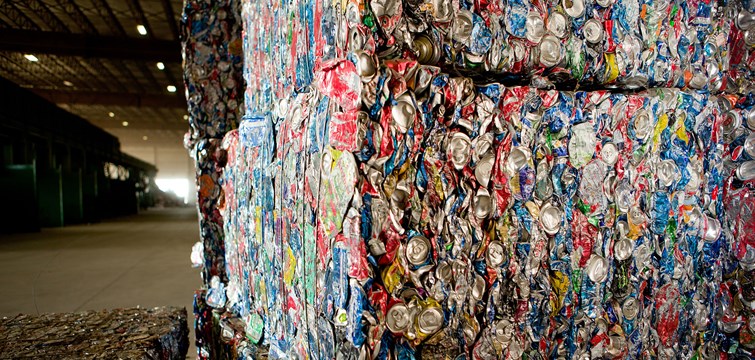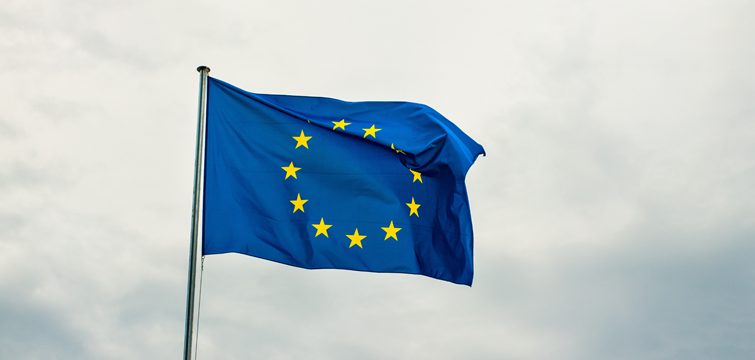It’s fair to say that in the last 20+ years, our industry has mainly concentrated on managing end-of-life products and paid very little attention to Ecodesign.
Interestingly, although (Extended) Producer Responsibility always had the objective to be an incentive for producers to design for environment, in practice, managing waste meant that the focus naturally shifted to the end process and away from influencing design processes at the beginning.
Producers keeping track of the Circular Economy Package (CEP) will have noticed a re-focus on waste prevention, and yes, that means addressing again the vexed question of Ecodesign.
Ecodesign is nothing new
The WEEE Directive after all expressly requires member states to “encourage…measures to promote the design and production of EEE”, the Batteries Directive requires manufacturers to “design appliances in such a way that waste batteries and accumulators can be readily removed”, and packaging according to the Essential Requirements – an often forgotten part of the Packaging and Packaging Waste Directive – should be “designed...in such a way as to permit its reuse or recovery, including recycling”.
This is typically one of the most disputed aspects of the legislation, particularly from manufacturers’ and brand holders’ points of view. Design has many aspects, aesthetics and functionality being just two obvious ones, but the focus is typically on the use phase much more so than what happens to the product at end of life.
Recent developments nationally (differentiated fees based on eco-design) and at European level (CEP, and the latest draft regulation on ecodesign requirements for electronic displays) have made me look at this more closely.
Ecodesign vs Design for Environment
From a legislative perspective it’s important to differentiate between Ecodesign, which is regulated by the Ecodesign Directive (2009/125/EC), its implementing measures and accompanying labelling requirements and Design for Environment, which is a design approach.
Ecodesign and Design for Environment (DfE) are terms often used interchangeably, and this to a certain extent isn’t all that wrong. One DfE concept for example is 'design for energy efficiency'.
In future, these two terms will become more muddled, as the Circular Economy Package Action Plan wants Ecodesign legislation – which up until now has concentrated solely on energy efficiency requirements and has historically sat in a completely different EU strategy cluster – to include requirements for repair, preparation for re-use and recycling.
This means that waste legislation and Ecodesign legislation will move closer together, and make Design for Environment more relevant than ever.
Ecodesign Working Plan 2016-2019
In accordance with the Ecodesign Directive (also known as ErP – Energy related Products, or EuP – Energy using Products), the commission releases regular Working Plans, detailing priority products whose energy efficiency should be regulated by an “Implementing Measure”.
At the end of last year the long awaited Working Plan 2016-2019 was released, and although the main focus remains on energy requirements, section 5 outlined the potential contribution to the Circular Economy.
“The Commission”, it says, “will explore the possibility of establishing more product-specific and/or horizontal requirements...such as durability (e.g. minimum life-time of products or critical components), reparability…, upgradeability, design for disassembly...information...and ease of reuse and recycling. “
The difficulty of consolidating legislation with design freedom
In a position paper issued last week, Digital Europe (an industry group representing the digital technology industry), criticised the draft regulation “Ecodesign requirements for electronic displays”, chiefly on the grounds of insufficient consultation, lack of impact assessment and incorrect assumptions regarding the extended scope of energy requirements.
The newly proposed Resource efficiency requirements, detailed in Annex III of the draft regulation also raised concern with Digital Europe and these will be reflective of other industry group concerns on future product legislation. The annex specifies several requirements impacting design, such as welding and gluing restrictions, marking of plastic parts and public availability of technical information.
The writer William Gibson tells us: "When you want to know how things really work, study them when they're coming apart”, which underpins both the intention of the requirement to disclose information (ease of repair and recycling) but also the industry’s concern regarding the protection of its intellectual property.
Digital Europe fears that disclosing to non-affiliated third parties how to “disassemble at the same time reveals IPR-sensitive information on how to assemble a product”. Rather reasonable in today’s competitive market.
Product design is instrumental in waste prevention
The 2015 Eunomia report The Potential Contribution of Waste Management to a Low Carbon Economy shows a higher CO2 emissions savings potential for preventing one tonne of card, paper or even plastic waste than recycling one tonne of WEEE, and preventing textiles from becoming waste out performs that potential for all recycled waste fractions measured (incl. aluminium, steel and plastic).
Not surprisingly a Circular Economy must be reinforced by products that are designed to last longer. But does legislating for design potentially threaten competitiveness, at best hamper creativity and at worst, seriously undermine innovation? After all, there is another factor to consider, unknown, unlegislated and unpredictable. Us.
Consumer commitment remains unexplored
UNEP (United Nations Environment Programme) just released its "Framework for shaping sustainable lifestyles” with its opening paragraphs detailing that “Today, cities are associated with 60 to 80 per cent of all greenhouse gas emissions, consume 75 per cent of natural resources, and account for 50 per cent of all waste”.
The upshot is, we’re using too much stuff. Interestingly, the report highlights from its first chapter that lifestyle and behaviour are strongly embedded with consumption. But if you asked any everyday shopper about the Circular Economy, the response wouldn’t be all that encouraging. Who outside of our own industry and the companies affected by it really understands why a Circular Economy matters?
No-one doubts the need to control design on grounds of safety, and environmental as well as social factors are highly emotive consumer concerns. But shopper “selective ignorance” on sustainability issues (especially when it comes to their pockets) is hardly sufficiently addressed in the Commission’s work on Ecodesign and Resource efficiency.
After all, energy efficiency measures are meant to enable, not force, consumers to make a better choice. Mandating design in a certain way to reduce a negative impact is different to promoting the freedom to make something better.
Both have a role to play in encouraging sustainable lifestyles, but industry arguably has a much closer relationship to consumers than european law makers do. An effective Circular Economy gives industry the motivation and freedom to change design and encourages consumers to demand it.
Useful links
A provisional agreement has been reached on the EU’s Packaging and Packaging Waste Regulation (PPWR).
Read More >>The world’s first United Nations-backed International Centre of Excellence on Sustainable Resource Management in the Circular Economy will be established in the UK.
Read More >>Impact Recycling is partnering with Syklo Ltd, a circular economy growth company, to build the largest plastic recycling plant in Finland, using innovative BOSS technology.
Read More >>



